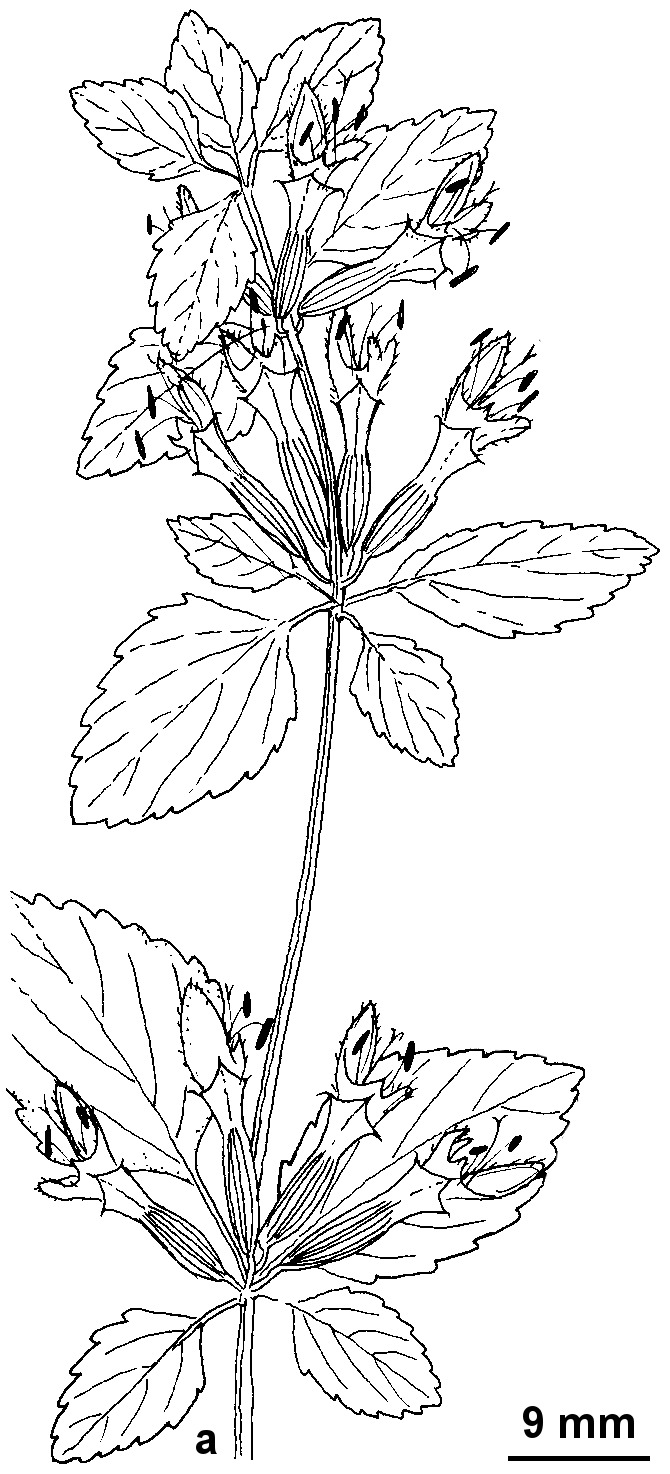Ballota nigra subsp. foetida
Hayek Black HorehoundPerennial to 2 m high; branches moderately to densely hairy with short decurved simple hairs and dull sessile glands. Leaves broad-ovate or -elliptic, c. 2–8 cm long, 1–6 cm wide, surfaces discolorous, with scattered spreading to subappressed hairs, apex obtuse, base cuneate, truncate or cordate, margin crenate-serrate; petiole to 4 cm long. Inflorescences usually with 6–10 flowers per axil; bracteoles linear, c. 6–9 mm long. Calyx 7–13 mm long, distally expanded, hairy; lobes 1.5–2.5 mm long, triangular-ovate, with mucro c. 0.5 mm long; corolla 12–15 mm long, lilac to pink, rarely white, tube subequal to calyx, abaxial lip c. glabrous, adaxial lip shortly hirsute, shallowly emarginate. Flowers Jan.–Apr.
VVP, VAlp. Native to western and central Europe. Known in Victoria from only 2 near-coastal collections (Coode Island 1892, and Williamstown 1950), and possibly no longer truly naturalised in the State.
Conn, B.J. (1999). Lamiaceae. In: Walsh, N.G.; Entwisle, T.J., Flora of Victoria Vol. 4, Cornaceae to Asteraceae, pp. 418–459. Inkata Press, Melbourne.
 Spinning
Spinning
